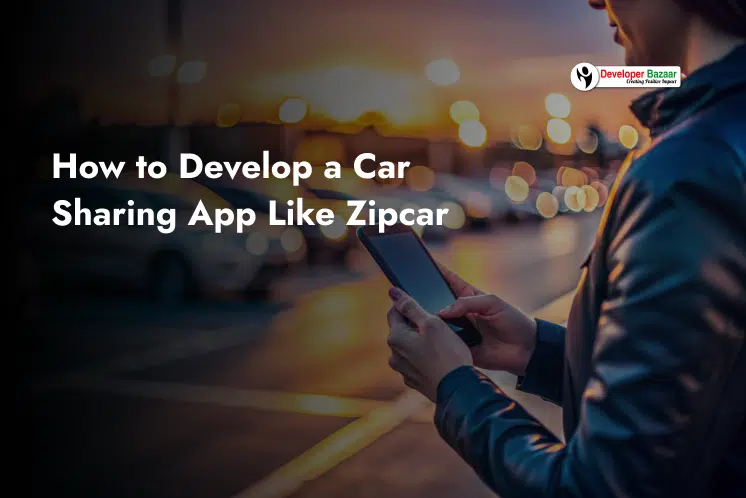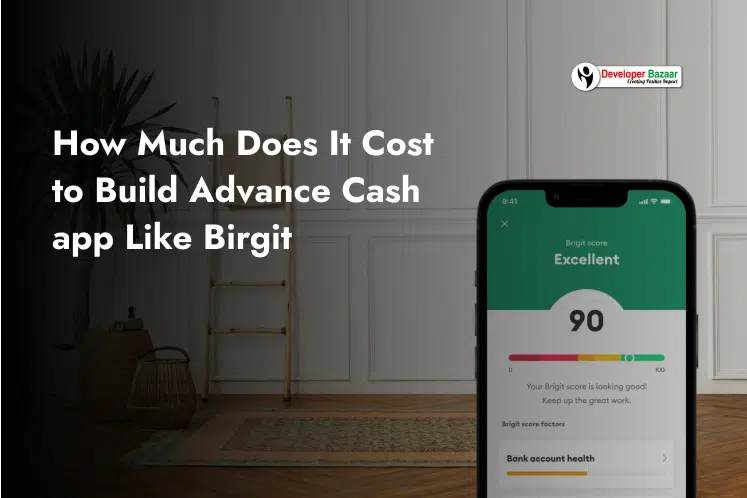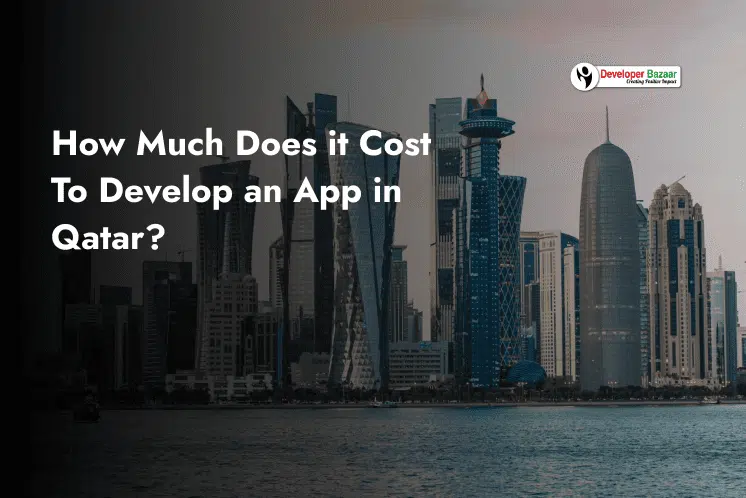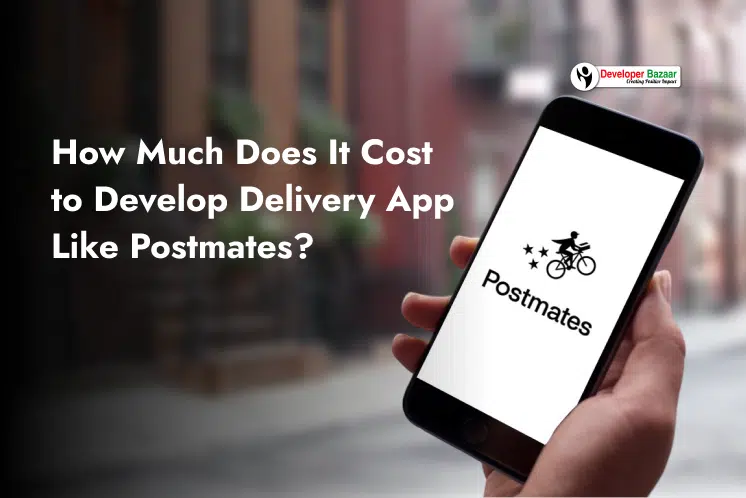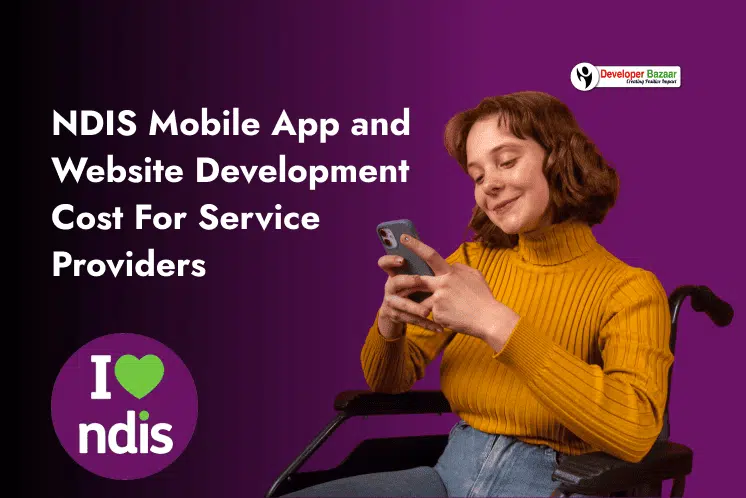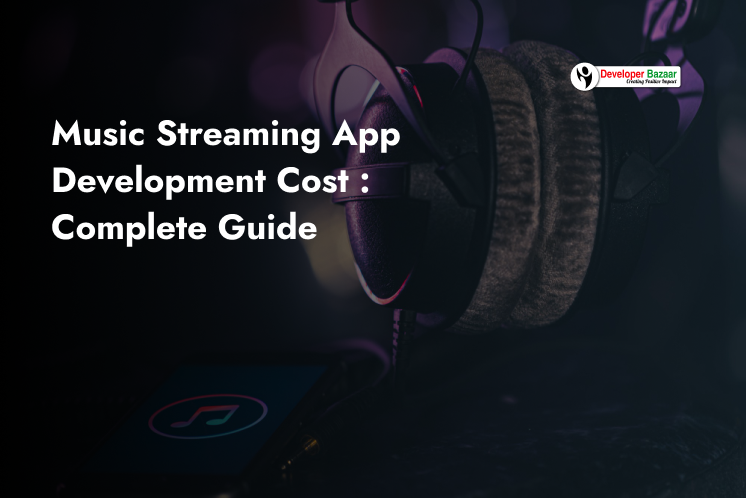Table of Contents
ToggleUrban mobility is experiencing a revolutionary transformation. Traditional car ownership models no longer align with modern consumer preferences, economic realities, or environmental priorities. As cities evolve, entrepreneurs are increasingly exploring how to develop car rental app like Zipcar to cater to flexible, on-demand transport needs.
The car sharing industry has emerged as the perfect solution to this challenge. Platforms like Zipcar have proven that consumers value access over ownership, convenience over commitment, and sustainability over status symbols. For anyone considering a Zipcar app development process, this shift represents a massive business opportunity.
The global car sharing market tells a compelling growth story for anyone analyzing the cost to develop car sharing app like Zipcar or planning strategic entry.
Market Size and Growth Projections:
- The global car sharing market was valued at $8.9 billion in 2024 and is projected to grow significantly, reaching $24.4 billion by 2033
- Car sharing market size is estimated to grow by $22.4 billion from 2025 to 2029 at a CAGR of 22.1%
- The U.S. car sharing market reached $3.1 billion in 2024 and is set to grow at a 4.8% CAGR from 2025 to 2034
- Europe car sharing market size is expected to exceed $9 billion by 2032
This comprehensive guide provides everything you need to develop a successful car sharing app like Zipcar. You’ll discover essential features, proven development strategies, accurate cost estimates, and profitable monetization models that ensure long-term success.
Why Car Sharing Apps Are on the Rise
The car sharing revolution stems from fundamental shifts in consumer behavior, economic pressures, and environmental consciousness that have accelerated significantly in recent years.
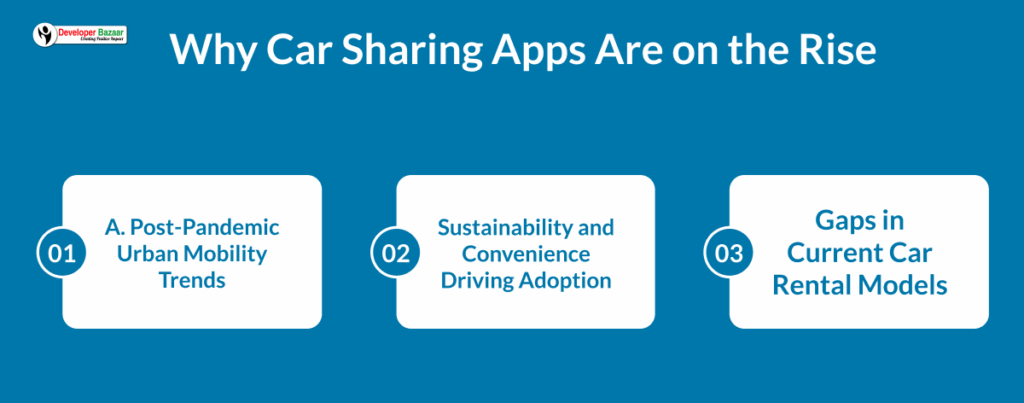
Post-Pandemic Urban Mobility Trends
The pandemic fundamentally altered how people think about transportation and vehicle ownership. Remote work arrangements reduced daily commuting needs, making car ownership less essential for many urban professionals. Simultaneously, health concerns increased demand for private transportation alternatives to public transit.
These changes created perfect conditions for car sharing adoption. Urban residents discovered they could meet their transportation needs without the financial burden and maintenance responsibilities of car ownership. The flexibility to access different vehicle types for specific needs – compact cars for city errands, SUVs for weekend trips, or premium vehicles for special occasions – became increasingly attractive.
Digital-first consumer expectations also accelerated during the pandemic. Users now expect seamless mobile experiences, contactless transactions, and instant service availability. Car sharing apps deliver all these features while providing transparency, convenience, and control that traditional rental companies struggle to match.
Sustainability and Convenience Driving Adoption
Environmental consciousness has become a significant driver of car sharing adoption, particularly among younger demographics. Studies show that each shared vehicle replaces approximately 9-13 privately owned cars, dramatically reducing urban congestion and emissions.
Modern consumers actively seek transportation solutions that align with their environmental values. Car sharing provides guilt-free mobility by maximizing vehicle utilization, reducing manufacturing demand, and enabling the integration of electric and hybrid vehicles into urban transportation networks.
Urban density and parking challenges further amplify car sharing appeal. In major cities where parking costs can exceed $300 monthly, car sharing eliminates parking expenses, insurance costs, maintenance fees, and depreciation concerns while providing guaranteed vehicle access when needed.
Gaps in Current Car Rental Models
Traditional car rental companies face significant challenges that create opportunities for innovative car sharing platforms:
- Location Limitations
Traditional rentals require trips to specific rental locations, often outside urban centers. Car sharing platforms position vehicles throughout neighborhoods, near transit hubs, and in convenient locations that fit users’ daily routines. - Rental Duration Restrictions
Traditional rentals typically require daily minimums and discourage short-term usage. Car sharing excels at serving hourly needs, quick errands, and flexible scheduling that matches modern urban lifestyles. - Hidden Fees and Complexity
Traditional rentals burden customers with complex pricing structures, insurance upsells, fuel charges, and unexpected fees. Car sharing platforms provide transparent, all-inclusive pricing that includes insurance, fuel, and maintenance costs. - Technology Gap
Many traditional rental companies lag in mobile technology, user experience design, and digital-first service delivery. Modern car sharing apps leverage cutting-edge technology to provide superior user experiences that build loyalty and encourage frequent usage.
Must-Have Features for a Car Sharing App
Successful car sharing apps require carefully designed features that balance user convenience, operational efficiency, and safety requirements. Here’s a comprehensive breakdown of essential features:
Real-Time Car Locator with GPS
The A real-time GPS-powered car locator is the backbone of any successful car sharing app. Users should be able to view available vehicles on an interactive map with details like location, fuel level, vehicle type, and availability.
Advanced filters further enhance the experience by allowing users to search based on preferences such as transmission, fuel type, or amenities. The proximity-based search ensures users can find nearby cars sorted by walking distance, with integrated directions and estimated arrival times.
Intelligent prediction algorithms also help users plan better by forecasting when vehicles will become available, while push notifications keep them updated when their preferred options appear nearby.
Smart Lock and Unlock Integration
To eliminate the need for physical keys, car sharing apps must integrate IoT-powered smart locks, enabling users to access vehicles directly via the app. This keyless entry system simplifies operations and ensures security with full audit trails.
Before unlocking a car, multi-factor authentication processes validate the user, confirm the reservation, and check the user’s proximity to the vehicle. More advanced systems even allow users to start the engine, control climate settings, and monitor fuel levels remotely, making the experience smoother and more convenient.
Seamless Ride Booking and Payment
A user-friendly booking flow allows users to reserve vehicles in just a few taps, whether for immediate use or in advance. The app should support flexible options for choosing start times, rental durations, and return locations.
Integrated payment systems automatically calculate and process charges, including hourly rates, fuel usage, and late return fees. Support for multiple payment methods, including cards, wallets, and corporate accounts, ensures a wide user base. Transparent pricing throughout the booking journey builds trust, and real-time cost tracking during rides helps users stay informed.
User KYC and Document Verification
Comprehensive safety and compliance demand rigorous identity checks. A robust KYC process ensures each user is verified using government-issued ID and address proof. The app should automatically validate driver’s licenses, ensuring legitimacy and checking for suspensions or violations in real time via DMV or regulatory databases.
In markets where it’s required, background checks can be seamlessly built into the sign-up flow, especially for users accessing premium cars or corporate programs, without compromising user privacy.
Trip History, Support, and In-App Chat
Detailed Each user’s account should maintain detailed trip records, including travel routes, ride duration, cost breakdowns, and fuel usage. This data not only helps users track expenses but also offers insights into driving patterns. Around-the-clock customer support must be built into the app via chat, emergency hotlines, or AI chatbots for instant query resolution.
Social elements like vehicle reviews, user ratings, and community guidelines encourage responsible behavior and service quality. For added peace of mind, users should have one-tap access to roadside assistance and emergency services during their trips.
How to Build a Car Sharing App Like Zipcar: Step-by-Step
Developing a successful car sharing app requires systematic planning that addresses technical complexity, regulatory requirements, and operational challenges unique to the mobility industry.
Step 1: Define Your Rental or Sharing Business Model
Start by conducting thorough market research. Understand your target users—be it urban professionals, college students, or suburban families—and assess what they truly need in a mobility solution. Analyze competitor offerings and look for gaps your app can fill.
Next, choose the operational model that best fits your goals. You could use a station-based setup where cars must be picked up and dropped off at designated locations. Alternatively, free-floating models allow users to park anywhere within a service zone. There’s also the peer-to-peer route, where individuals list their personal vehicles for rent.
Once your model is set, craft a pricing strategy that strikes a balance between user appeal and profitability. Offer hourly or daily rates, membership plans, and transparent pricing. This ensures users know exactly what they’re paying for while covering your operational expenses such as insurance, maintenance, and fleet management.
Step 2: Develop Location-Aware Backend
A car sharing app lives and breathes real-time data. Your backend should be cloud-based and scalable, capable of managing bookings, user data, payments, and GPS tracking without lag. It also needs to be secure and compliant with data regulations.
Incorporate advanced location intelligence. This includes real-time vehicle tracking, geofencing, movement alerts, and predictive arrival times. Integration with mapping services allows for optimal route suggestions and traffic updates.
On the operational side, your fleet management system should track vehicle conditions, fuel levels, and maintenance needs. Predictive analytics can help reposition cars to areas with higher demand and reduce downtime.
Step 3: Integrate Vehicle Access Control (via IoT)
Keyless access is now a baseline expectation. Collaborate with IoT hardware vendors to install smart lock systems that allow users to unlock and lock cars through the app—no physical keys or staff needed.
Telematics should be integrated to collect vehicle performance data like fuel usage, engine diagnostics, speed, and driving behavior. This supports preventive maintenance, safety alerts, and operational optimization.
Security must be a top priority. Implement multi-factor authentication, encrypt all communications, and use tamper-proof hardware to prevent unauthorized vehicle access or data breaches
Step 4: Create a User-Friendly Mobile Interface
Your mobile app should be simple, fast, and visually intuitive. Design it so users can find, reserve, and unlock a vehicle with minimal effort. Make information like pricing, location, and vehicle details clear and accessible.
Build for both iOS and Android users, either through native development or a cross-platform framework like React Native or Flutter. This ensures a consistent experience across devices.
Don’t forget offline capabilities. In areas with weak signals—like underground parking—users should still be able to access their reservation and unlock the vehicle. These small details greatly enhance reliability and user trust.
Step 5: Conduct Testing for Compliance and Scalability
Before launching, test everything extensively. Your QA process should evaluate app performance, user flows, and security protocols under real-world and high-traffic scenarios. Fix bugs, streamline interactions, and ensure the app doesn’t crash under load.
Regulatory compliance is equally critical. Meet transportation laws, insurance requirements, accessibility norms, and data privacy regulations in every operating region. Regular audits help maintain this compliance over time.
Conduct thorough security testing across your mobile app, backend servers, and IoT devices. This includes vulnerability assessments and penetration testing to prevent potential breaches.
Finally, run a pilot in a limited area. This lets you gather feedback, test assumptions, and refine both the tech and operations before scaling up.
Tech Stack to Power Your Zipcar-Like App
Selecting the right technology stack lays the foundation for a car sharing platform that’s scalable, real-time, and secure. From GPS and IoT integration to payment gateways and cloud infrastructure, each layer plays a key role in ensuring seamless performance under dynamic urban conditions.
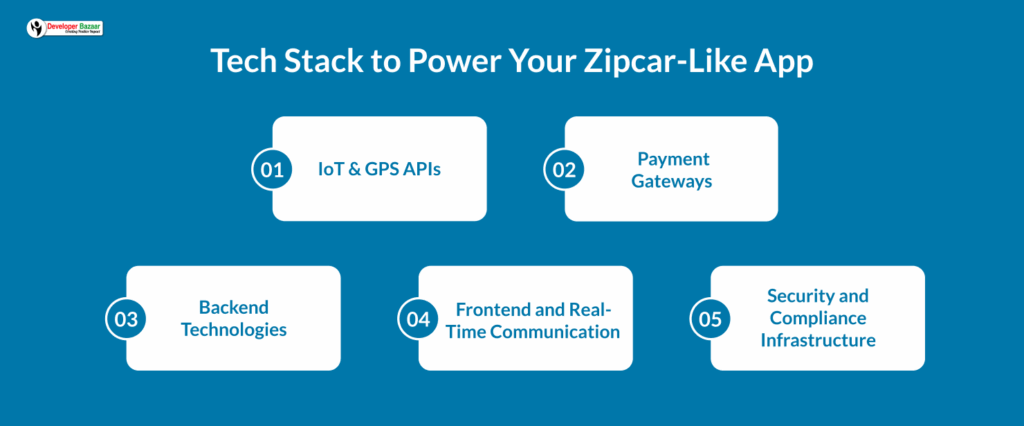
• IoT & GPS APIs
Accurate location services are central to the car sharing experience. Platforms like Google Maps offer detailed mapping, geocoding, and route navigation with worldwide coverage. For more customizable options, Mapbox delivers offline capabilities and intelligent geolocation features, while HERE Technologies provides enterprise-grade mapping with native support for IoT fleet management.
To track vehicles and monitor driving behavior, you’ll need robust telematics platforms. Geotab is ideal for comprehensive fleet diagnostics and driver analytics. CalAmp focuses on asset tracking and real-time vehicle connectivity, while Verizon Connect provides end-to-end mobile workforce and fleet management solutions.
On the hardware side, platforms like Particle offer seamless IoT device management. AWS IoT Core enables scalable, real-time communication between vehicles and backend systems, while Azure IoT Hub brings enterprise-level security and analytics capabilities.
• Payment Gateways
Integrating a reliable payment system is vital for user trust and smooth transactions. Global platforms like Stripe provide flexible APIs, fraud prevention, and support for multiple payment methods. PayPal offers global reach with buyer protection, while Square merges mobile-first design with business-friendly tools.
For region-specific needs, Razorpay stands out in the Indian market, offering extensive local payment options and compliance readiness. Adyen and Braintree also offer global reach with unified commerce and flexible integration options.
Mobile payment integration adds to user convenience. Apple Pay and Google Pay allow seamless tap-to-pay experiences within the app. Regional digital wallets cater to local audiences, and for tech-savvy users, enabling cryptocurrency payments can future-proof your app.
• Backend Technologies
The server-side of your car sharing app must be fast, scalable, and built for real-time interactions. Node.js with Express is ideal for JavaScript-heavy stacks and fast event-driven applications. Django, written in Python, offers a secure, feature-rich environment with built-in admin tools. For enterprise-grade architecture, Spring Boot in Java supports microservices and complex deployments.
When it comes to data storage, PostgreSQL is a strong relational database with geospatial features and JSON support. MongoDB is great for handling flexible, large-scale data structures, while Redis powers real-time caching and session management.
For hosting, cloud platforms like Amazon Web Services (AWS) offer auto-scaling and broad support for development tools. Google Cloud Platform stands out with AI and ML tools, while Microsoft Azure brings hybrid cloud support and strong compliance features for enterprise clients.
• Frontend and Real-Time Communication
For mobile apps, React Native enables faster development with a single codebase for both iOS and Android. Flutter, Google’s framework, also supports cross-platform development with smooth UI performance. Native development with Swift and Kotlin remains ideal for advanced platform-specific features.
For the web interface, React.js offers a dynamic, component-based structure that handles large-scale interfaces well. Vue.js provides simplicity and great performance, while Angular is robust for building enterprise-grade web apps with TypeScript support.
Real-time interactions enhance user experience dramatically. Socket.io facilitates instant communication between users and vehicles. WebRTC supports live video and peer-to-peer communication. Firebase handles real-time databases, push notifications, and authentication with ease—making it a great option for rapid deployment.
• Security and Compliance Infrastructure
Strong security starts with reliable authentication. OAuth 2.0 is the industry standard for secure API authorization, while JWT (JSON Web Tokens) allows encrypted, stateless user authentication. Multi-factor authentication adds an extra layer of safety through SMS, email, or biometric checks.
Data protection is non-negotiable. SSL/TLS encryption ensures secure data transmission, while AES encryption protects data stored at rest. Key management services handle encryption key generation, storage, and lifecycle management with enterprise-grade safeguards.
Your app must also adhere to regulations. GDPR and CCPA compliance ensures user privacy and consent handling. PCI DSS standards protect payment data. Continuous security monitoring tools detect threats and trigger automated incident responses to prevent damage.
What It Costs to Develop a Car Sharing App in 2025
Understanding development costs requires examining both initial investment and ongoing operational expenses, with significant variations based on feature complexity, team location, and quality requirements.
Development Investment by Complexity Level
| Complexity Level | Development Time | Investment Range | Core Features Included |
|---|---|---|---|
| MVP Version | 4-6 months | $15,000 - $25,000 | Basic booking, GPS tracking, payment processing, user profiles |
| Standard Platform | 7-10 months | $25,000 - $50,000 | IoT integration, advanced search, real-time tracking, customer support |
| Advanced Solution | 10-14 months | $50,000 - $80,000 | AI optimization, fleet management, analytics dashboard, multi-language support |
| Enterprise Platform | 14+ months | $80,000+ | White-label solutions, enterprise integrations, advanced security, custom hardware |
Regional Cost Variations
The geographic location of your development team has a significant impact on overall costs, even when maintaining high quality standards. Eastern European development teams typically charge between $25,000 and $80,000 for a standard car sharing platform. These teams offer strong technical expertise, fluency in English, and the added benefit of working within European time zones.
Indian development teams remain highly competitive, offering full-featured apps in the range of $22,000 to $75,000. They bring deep experience in mobility solutions and can support 24/7 development cycles thanks to time zone flexibility and scalable team structures.
If you’re looking for premium mobile app development company in Western Europe, expect to invest between $55,000 and $110,000. These teams combine regulatory know-how, advanced capabilities in automotive and IoT, and cultural alignment that enhances communication and collaboration.
North American teams represent the upper end of the pricing spectrum, typically ranging from $80,000 to $150,000. Their strengths lie in regulatory compliance, data security, and vast experience in building industry-grade platforms with advanced integrations and robust backend support.
Add-ons and Advanced Features
Beyond the core functionality, optional features can significantly elevate your platform and contribute to long-term success. Implementing a fleet management system costs around $15,000 to $35,000 and includes tools for tracking vehicle performance, scheduling maintenance, and optimizing utilization through visual dashboards.
For those looking to leverage AI in taxi industry, predictive analytics can be built in for an additional $20,000 to $45,000. These capabilities enable smarter pricing models, demand forecasting, and intelligent vehicle distribution that boosts efficiency and user satisfaction.
Hardware integration for IoT features—such as smart locks, telematics, and vehicle diagnostics—can cost between $10,000 and $25,000, covering everything from development to installation and testing.
If you want your app to function across multiple platforms, plan for an additional $8,000 to $18,000. This covers the development of web dashboards, admin portals, fleet manager tools, and customer support modules that work in sync with your mobile interface.
Ongoing Operational Expenses
After launch, ongoing operational costs are a key consideration. Monthly infrastructure expenses range from $800 to $2,500, depending on the size of your fleet, user base, and app complexity. These costs typically cover cloud hosting, real-time GPS tracking, IoT connectivity, and payment processing.
Annually, you’ll also need to account for compliance and maintenance. IoT device upkeep generally costs $50 to $150 per vehicle. Insurance premiums range between $8,000 and $25,000 annually, and regulatory consulting can cost between $10,000 and $30,000 per year to ensure continued legal compliance.
Third-party integrations come with their own cost structure. For example, mapping services may charge $0.005 to $0.02 per API request, while payment processors typically take 2.9% to 3.5% of each transaction. Telematics providers charge about $15 to $35 per vehicle per month for real-time data and analytics.
Customer support infrastructure is another recurring investment. Annual costs range from $8,000 to $20,000 for help desk software, ticketing systems, and AI chat tools. As your fleet and user base grow, dedicated support staff may also become necessary to maintain high service standards.
Revenue Models You Can Explore
Successful car sharing platforms employ diversified revenue strategies that maximize profitability while maintaining user affordability and satisfaction.
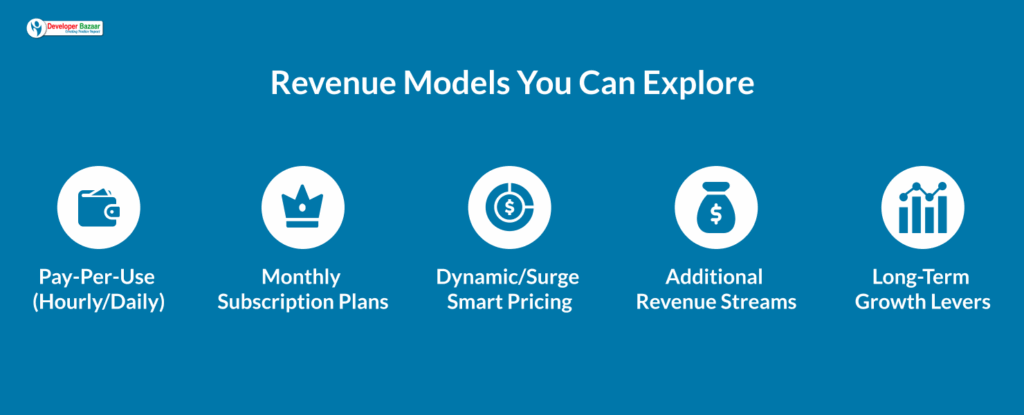
Pay-Per-Use (Hourly/Daily)
Most car sharing platforms thrive on hourly or daily pricing models. Hourly rates usually range from $8 to $15 based on location, vehicle type, and demand—ideal for users who need flexibility without long-term commitment. For longer use, daily packages between $50 and $120 offer discounted rates, making them attractive for full-day travel. Mileage-based fees (typically $0.25–$0.50 per extra mile) also ensure fair usage and help cover operational wear and fuel costs.
Monthly Subscription Plans
Subscriptions add stability to revenue while catering to frequent users. All-inclusive memberships, priced between $99 and $299, provide unlimited access, reduced hourly rates, and priority bookings. Tiered options allow platforms to cater to various segments—from basic users to those who want premium perks like luxury cars or zero booking fees. Corporate subscriptions offer volume discounts and central billing, helping businesses manage employee mobility with ease.
Dynamic/Surge & Smart Pricing
Dynamic pricing lets platforms respond to fluctuations in demand. Rates can increase during holidays, events, or peak hours—and drop when demand is low—ensuring better fleet utilization. Platforms can also adjust prices geographically, charging more in high-demand areas like city centers. Machine learning helps automate this process, continuously optimizing rates based on real-time data and user behavior while maintaining transparency.
Additional Revenue Streams
Upselling insurance and protection plans can add 10–25% to bookings, giving users peace of mind and increasing margins. Partnering with hotels, airlines, and corporates opens new booking avenues and revenue through referrals. Advertising—whether in-app or through branded vehicles—provides passive income, while value-added services like vehicle delivery, fuel refills, and cleaning offer both convenience and incremental revenue.
Long-Term Growth Levers
To maximize profitability, focus on user retention. Loyalty programs, personalized offers, and referral incentives can boost customer lifetime value to $500–$2,000. Operationally, maximizing each vehicle’s daily usage (ideally 8–15 hours) improves ROI significantly. Finally, expanding into new cities with proven demand helps scale revenue while building on your existing tech and infrastructure.
Final Thoughts: Building the Next Zipcar
Car sharing isn’t just a business opportunity—it’s a chance to redefine urban mobility. With growing demand for flexible, eco-friendly transport, building a Zipcar-like app can position you at the forefront of this shift. The future lies in platforms that go beyond rentals, integrating seamlessly with public transit, micro-mobility, and real-time data to deliver smart, sustainable solutions.
To scale successfully, start local. Build trust, ensure compliance, and refine your operations before expanding. Adapt to local preferences, partner with professional Taxi app development company, and stay focused on user experience. With strong strategy and the right tech foundation, your platform can rival industry leaders and drive the next phase of urban mobility.
FAQs
1. How much does it cost to develop a car sharing app like Zipcar?
An MVP costs around $25,000–$45,000 and takes 4–6 months to build. Advanced apps with IoT and AI features can reach $130,000. Costs vary by region—Indian teams offer competitive rates, while North American firms charge a premium for full-service development.
2. What ongoing costs should I expect after launching my car sharing app?
Post-launch, budget 15–20% of your initial cost annually for updates and maintenance. Factor in IoT upkeep, insurance, payment processing fees, and customer support—totalling $10,000–$30,000+ per year depending on your scale.
3. How long does it take to see return on investment?
Most platforms break even in 18–30 months. Revenue can grow from $50K in year one to over $1M annually for mature apps—driven by strong utilization, pricing strategy, and market reach.
4. What makes car sharing apps different from traditional car rental platforms?
Car sharing apps offer hourly access, keyless entry, and neighborhood-based vehicles with transparent pricing. Traditional rentals require office visits, longer commitments, and separate insurance handling.
5. Can I compete with established platforms like Zipcar?
Yes—by targeting underserved markets, offering better tech, or focusing on EVs, AI-powered matching, and hyper-local service. Differentiation and user experience are key.
6. What compliance requirements must my car sharing app meet?
Ensure commercial auto insurance, license verification, vehicle checks, and adherence to GDPR/CCPA and PCI DSS. IoT devices must meet safety standards. Legal consultation is essential.
7. How do I validate my app idea before full development?
Start small—research your market, build user personas, prototype key features, and run focus groups. Partner locally for pilot programs to test real-world demand.
8. What's the most effective monetization strategy for car sharing apps?
A hybrid model works best: combine hourly pricing and monthly subscriptions with optional insurance, B2B plans, and value-added services. Use dynamic pricing to boost revenue during peak hours.

RM Mishra
Co-Founder
Developer Bazaar technologies
